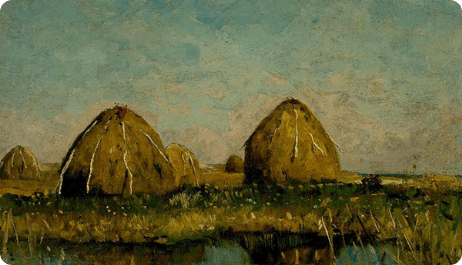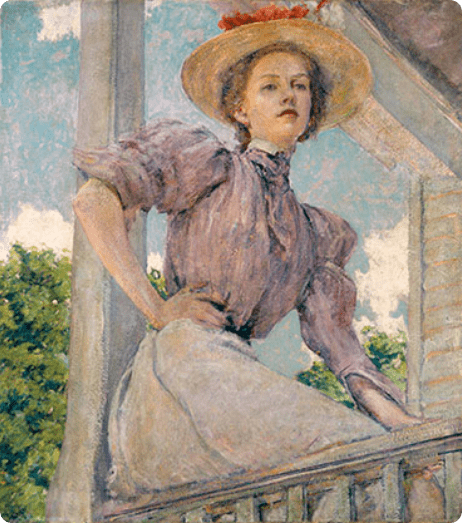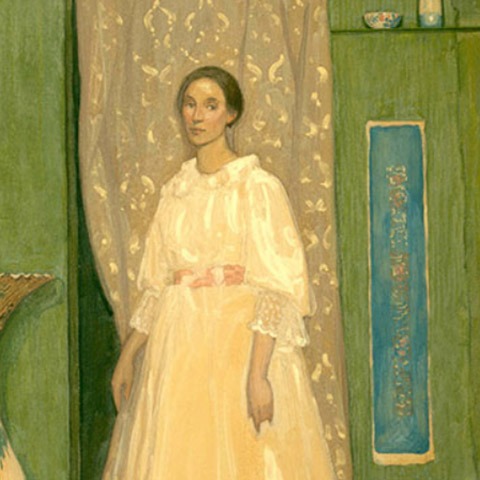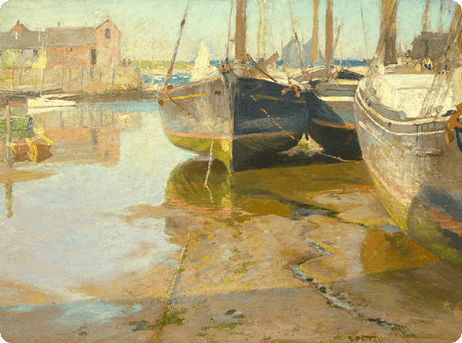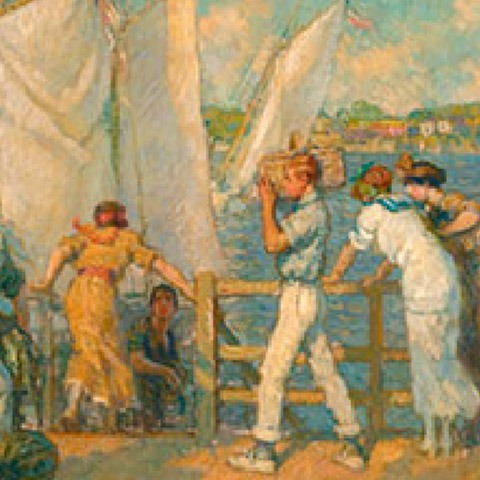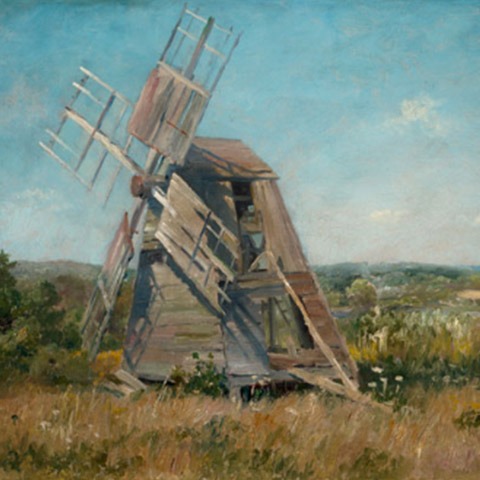American Impressionism
In the late 1800s, European academic artists began experimenting with recording specific effects of light and atmosphere, inspired in part by the perspectives and subject matter found in Japanese woodblock prints. Painting outdoors, or en plein air, gave their work a fresh, immediate appearance with unblended brush strokes and quick applications of paint. Many of these artists created their work in rural settings, such as Barbizon, France, away from their urban artist studios. American students studying art in Paris in the 1870s and ‘80s witnessed these ideas of the first European Impressionists. This style of painting, initially judged as a controversial reaction to the academic traditions, arrived late in America but grew into enormous and enduring popularity for artists, art instructors and collectors. While French impressionism often celebrated realist subjects, such as the poor, urban industry and leisure activities, American impressionism mostly featured landscapes and portraits of wealthy Americans.



